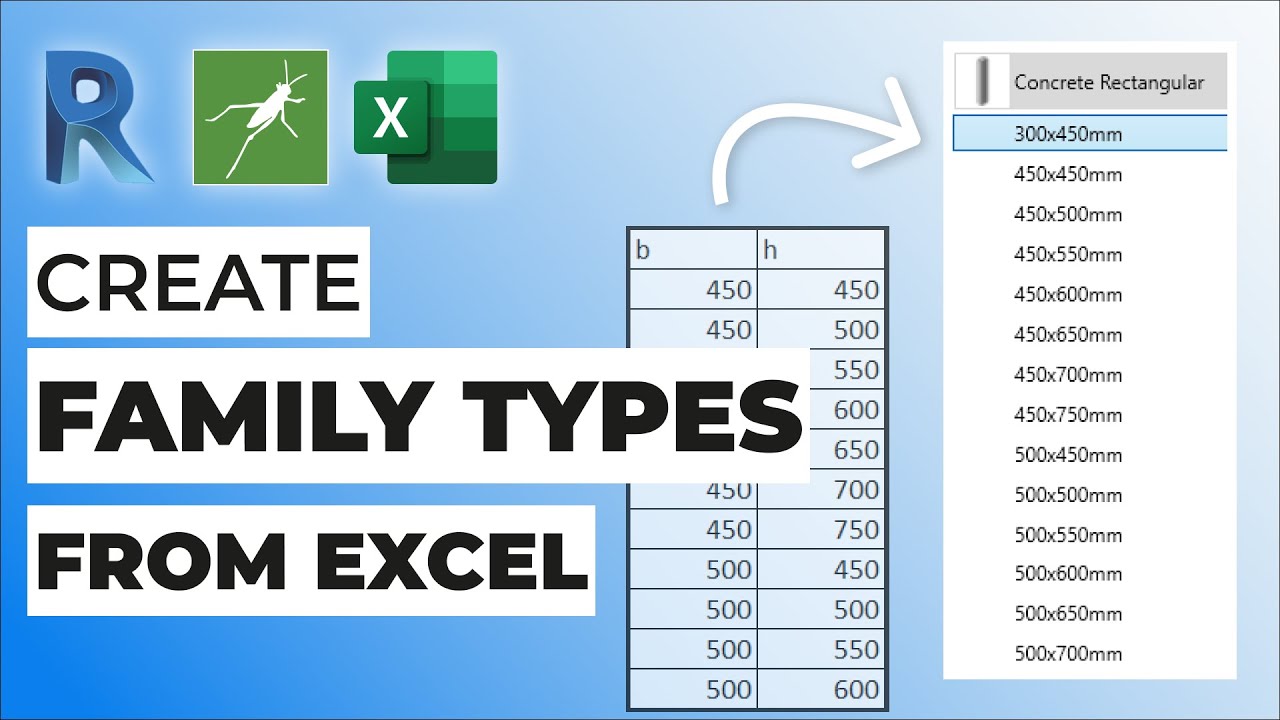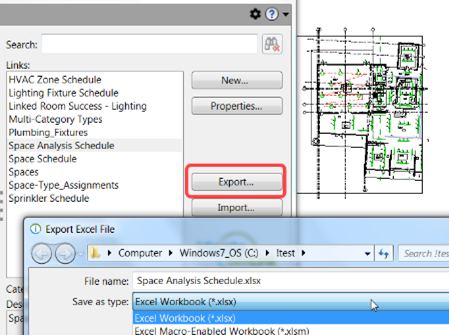Elevate Your Style Video Game with Important Revit Add Ins
Wiki Article
Damaging Obstacles: Excel Importation Techniques for Advanced Revit Users
Are you a sophisticated Revit user aiming to take your abilities to the next level? In this write-up, we will certainly reveal you how to break obstacles by leveraging Excel for importation in Revit. Explore numerous data importation techniques and master Excel integration to enhance your Revit modeling abilities. With our tricks and ideas, you can get rid of importation difficulties and end up being a true specialist in utilizing Excel for your Revit projects. Prepare yourself to master your Revit journey!Advanced Revit Users: Leveraging Excel for Importation
You can easily utilize Excel for importation as an innovative Revit user. Excel is a powerful tool that can greatly enhance your workflow and performance in Revit. With its ability to handle big amounts of information and execute intricate calculations, Excel can be an useful asset in handling and arranging your job details.One method to utilize Excel for importation is by making use of the "Link Excel" function in Revit. This feature allows you to connect an Excel spread sheet directly right into your Revit project, allowing you to upgrade and integrate information in between the two programs. This can be specifically useful when dealing with schedules or tracking adjustments in your project.
An additional method to make use of Excel is by making use of the "Import/Export" function in Revit. This feature permits you to import and export data between Revit and Excel, offering you the flexibility to function with information in both programs. You can import information from Excel into Revit to develop components such as walls, areas, or doors, and you can also export data from Revit to Excel for more evaluation or coverage.

Exploring Data Importation Techniques in Revit Making Use Of Excel
Exploring how to import information from Excel right into Revit uses efficient approaches for integrating information. When you import information from Excel, you can effortlessly move data such as room timetables, product checklists, and devices information into your Revit job. This procedure permits you to save effort and time by staying clear of manual data entry.To import data from Excel right into Revit, you can utilize the "Import/Export" attribute. This attribute allows you to map the Excel data fields to the matching Revit specifications, making sure that the details is appropriately designated within the design. By choosing the appropriate import options, you can control just how the information is imported and how it connects with your project.
One more technique for importing information from Excel right into Revit is by using Eager beaver. With Eager beaver, you can develop custom scripts that import information from Excel and control it within your Revit task.
Grasping Excel Integration for Advanced Revit Modeling
One vital method is importing data from Excel spreadsheets directly right into your Revit model. With a few basic steps, you can map the Excel columns to the equivalent Revit parameters and import the data accurately.Another valuable technique is exporting information from Revit to Excel. This allows you to extract details from your design, such as schedules or material quantities, and evaluate it in Excel utilizing solutions, graphes, or other effective devices. By leveraging the capabilities of Excel, you can carry out intricate estimations, produce custom reports, and gain valuable understandings right into your task.
In enhancement to information transfer, Excel integration can automate repetitive jobs in Revit. By creating macros or manuscripts in Excel, you can automate procedures like producing views, creating sheets, or applying typical families - revit tools. This not just saves time yet also guarantees consistency throughout your job
To understand Excel integration in Revit, it is crucial to understand the data structure and exactly how Revit interacts with Excel. By familiarizing yourself with the readily available devices and techniques, you can unlock the full potential of Excel integration and take your Revit modeling to the next degree.
Conquering Importation Difficulties: Excel Techniques for Revit Experts
When overcoming importation difficulties, it's essential to be acquainted with reliable Excel methods that can benefit specialists in Revit. As a sophisticated Revit individual, you understand the relevance of flawlessly importing data from Excel into your jobs.
An additional helpful strategy is making use of the "Transpose" function in Excel. This allows you to transform information from rows to columns or the other way around. When importing information into Revit, this can be specifically useful when you have data in a vertical style in Excel, however you need it to be in a horizontal format in next Revit.
Additionally, using Excel formulas such as VLOOKUP and INDEX-MATCH can considerably assist in mapping information from Excel to Revit. These formulas enable you to look for particular values in Excel and recover corresponding information from another column. This can save you time and initiative when importing huge datasets into Revit.
Excel Information Importation Tips and Tricks for Advanced Revit Users
By familiarizing yourself with effective Excel techniques and ideas, you can improve your information importation procedure as an advanced user of Revit. Additionally, utilizing Excel's "Paste Unique" attribute enables you to paste data from Excel into Revit while preserving formatting, such as cell color or font style. Another useful method is to utilize Excel's like this "Find and Replace" function to promptly make changes to your data before importing it right into Revit.
Verdict
You have now learned valuable methods for importing data from Excel into Revit as an innovative customer. By leveraging the power of Excel integration, you can simplify your modeling procedure and overcome any importation challenges that might arise. With these tips and methods, you will have the ability to master information importation and improve your Revit abilities. So proceed, damage those obstacles and excel in your Revit tasks!
When importing information right into Revit, this can be especially useful when you have data in an upright format in Excel, but you need it to be in a straight layout in Revit.
Furthermore, making use of Excel solutions such as VLOOKUP and INDEX-MATCH can considerably aid in mapping data from Excel to Revit. Furthermore, making use of Excel's "Paste Unique" function enables you to paste data from Excel right into Revit while preserving format, such as cell shade or font design.
Report this wiki page